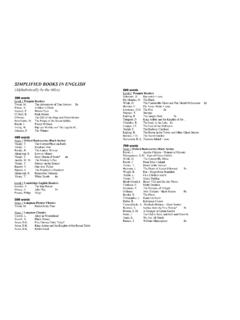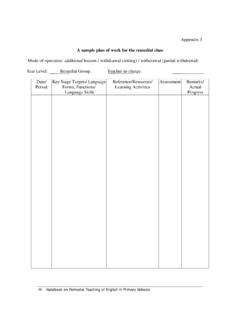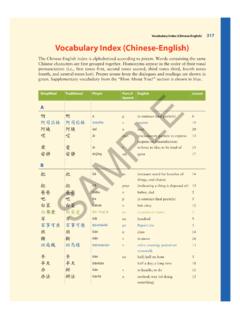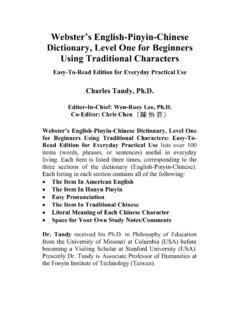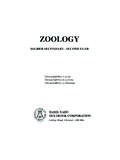Transcription of English for Driving Theory - ESOL UK
1 1 English for Driving Theory a course to help you with the language of the driing Theory test Address Telephone Tutor Start Date STUDENT WORKBOOK NAME: _____ 2 TUTOR NOTE Student s Tutor s STUDENT ASSESSMENT Initial Interview form taken Date Diagnostic completed (page 10) Date Learning Style Visual Auditory Kinaesthetic Many of the interactive documents use Visual Basic coding. You need to click Enable Macros when asked by the computer. STUDENT NEEDS / ACTION PLAN Please note any individual needs or/and agreed objectives arising from the initial interview and diagnostic (page 10).
2 3 Student Tracking. Please tick after completion Page 6 ROLAs (ESOL and Adult Literacy) 8 Learning Styles 10 Individual Diagnostic 11 Before I Learn to Drive (icebreaker) 12 Important words to learn for session 1 13 Lighting controls 14 Name the car parts 19 Diary for session 1 20 Important words to learn for session 2 21 Name the gears 22 Changing gears 23 Car safety checks 26 Alertness 30 Attitude and Alertness 33 Diary for session 2 34 Important words to learn for session 3 35 Changing gear 36 Moving off 37 Hazard Perception 41 Safety Margins 1 45 Finding a Driving instructor 46 Vehicle safety and margins 49 Diary for session 3
3 50 Important words to learn for session 4 51 Signs and colour 52 Vulnerable road users 53 Attitude and Safety 56 Safety margins 2 59 Hazard awareness 63 Diary for session 4 Session 1 Session 2 Session 3 Session 4 CONTENTS 4 64 Important words to learn for session 5 65 Types of vehicles 67 Signs for road handling 68 Rectangular signs 70 Directions 1 72 Other types of vehicles 76 Diary for session 5 77 Important words to learn for session 6 78 Directions 2 80 Motorway signs 84 Stopping distances 1 86 Vulnerable road users 89 Motorway rules 1 93 Diary for session 6 94 Stopping distances 2 95 Important words to learn for session 7 96 Speed limits 1 98 Rules of the road 1 99 Traffic lights 102 Motorway rules 2 105 Rules of the road 2 109 Diary for session 7 110 Important words to learn for session 8 111 Speed limits 2 112 Road signs 113 More road signs 115 Documents and spelling months 116 Vehicle licence 117 Vehicle MOT 118 Vehicle Log
4 Book 120 Road and traffic signs 124 Diary for session 8 Session 6 Session 7 Session 8 Session 5 5 125 Important words to learn for session 9 126 Accidents 1 129 Road markings 132 Car insurance 133 Insurance and writing dates 134 Car documents 137 Diary for session 9 138 Important words to learn for session 10 139 Accidents 2 143 Useful words to remember 144 Hand signals 147 Accidents and Vehicle Loading 149 End of course test 150 Diary for session 10 151 End of course review 152 Theory Test Video Q&A 156 Cut & paste for Alertness questions, page 26 158 Cut & paste for Safety Margins 1, page 41 160 Cut & paste for Safety Margins 2, page 56 162 Cut & paste for Vulnerable Road Users, page 86 164 Cut & paste for Motorway Rules.
5 Page 102 166 Example yearly calendar 167 Handwriting practice worksheets 169 Links to Driving websites 170 Summary of ESOL Core Curriculum codes used Session 9 Session 10 Appendix Paired or group activity Computer activity Writing activity Workbook icons explained 6 Range of possible evidence for achievement from workbook Assessment Criteria Em Con Est Evidence of achievement student sign tutor sign D a t e D a t e D a t e PAGES: 51, 52, 67-71, 78-82, 98, 112-114, 120-123 Obtain information from maps and diagrams PAGES: 19, 33, 49, 63, 70, 71, 93, 101, 124, 137, 150 Read and understand linking words and adverbials in instructions and directions PAGES: 26-29, 41-44, 56-58, 86-88, 102-104 Use knowledge of word order to work out meaning and confirm understanding Any pages which show progression Produce legible text PAGES.
6 14, 20, 34, 50,77, 95, 110, 125, 138 Obtain information from a simplified (or/and bilingual) dictionary ROLA for ESOL Core Curriculum 7 Range of possible evidence for achievement from workbook Assessment Criteria Em Con Est Evidence of achievement student sign tutor sign D a t e D a t e D a t e PAGES: 51, 52, 67-71, 78-82, 98, 112-114, 120-123 Obtain information from signs and symbols PAGES: 19, 33, 49, 63, 70, 71, 93, 101, 124, 137, 150 Read and understand linking words and adverbials in instructions and directions PAGES: 26-29, 41-44, 56-58, 86-88, 102-104 Use knowledge of sentence structure and word order to help decipher unfamiliar words and predict meaning Any pages which show progression Produce legible text PAGES: 14, 20, 34, 50,77, 95, 110, 125, 138 Obtain information from a simplified (or/and bilingual) dictionary ROLA for Adult Literacy Core Curriculum Tick one or more boxes.
7 I like working on my own I like working with a friend I like working in a group ---------------------------------------- ------------------------------------- listening to people listening to songs talking about pictures learning how to say words How do you like to learn? reading books spelling tests making lists of new words doing crosswords or quizzes LEARNING STYLES Stephen Woulds / Jennie Cole Leeds City College 9 Check your student s learning style by looking at the tick boxes. speak / listen auditory learner reading / write visual learner do kinaesthetic learner playing games working on the computer making things LEARNING STYLE RESULTS: auditory learner visual learner Kinaesthetic learner Visual learners learn best from images, text and looking: board work, videos, taking notes, posters in classroom.
8 Auditory learners like sound to help them learn. discussion, using cassettes in class, songs and working on pronunciation. Kinaesthetic learners like a hands-on style of learning. cutting and pasting, matching cards, games and role-plays. Stephen Woulds / Jennie Cole Leeds City College 10 1. Do you have a provisional licence? Get form D1 from the post-office. or go to 2. Do you have a Driving Theory book? 3. Why do you want to drive? Work? Family? 4. Have you booked or taken the Theory test yet? 5. How are you going to learn and remember the Theory questions? 6. What do you think will be easy or difficult about the Theory test?
9 7. What do will be easy or difficult about the class lessons? 8. Is your handwriting neat and easy easy to read? See pages 167-168 for help. INDIVIDUAL DIAGNOSTIC Stephen Woulds / Jennie Cole Leeds City College 11 BBEEFFOORREE II LLEEAARRNN TTOO DDRRIIVVEE XX Decide in your group whether these are true or false: TTRRUUEE FFAALLSSEE The minimum age which you can drive a car is 17 You must never drive if it s raining The person you practice with must have a full licence and be over 21 years of age Before you start to drive or apply to take your Theory Test.
10 You must have a provisional Driving licence You must never eat before Driving Your vehicle must be insured You cannot drive on the first Tuesday of each month You are not allowed to practice on your own in a car Your vehicle must be taxed Your eyesight must be good ICEBREAKER Stephen Woulds / Jennie Cole Leeds City College 12 1 _____ are people crossing the road. 2 A clean windscreen is important for _____. 3 Slow down when you are _____ a roundabout. 4 _____ your speed near schools. 5 _____ your speed on the motorway. Word Pedestrians 1 Decrease 2 Approaching 3 Increase 4 Prevent 5 Stationary 6 Visibility 7 Dazzle 8 Blind spot 9 Attitude 10 Meaning Stop from happening Not moving How well you can see 1 People on the road and pavement Shine a light in someone s eyes An area you can t see Being nice or rude to other drivers Moving towards you To go faster To go slower You will need to understand these words for today s lesson.


